Herbalism, found and practiced throughout virtually every region and people of the world, has been practiced with quite some success for thousands of years. Many modern practitioners and patients of herbal or holistic medicine consider it to be the precursor of modern pharmaceutical medicine.
And, considering that most modern pharmaceuticals are comprised of, or have been developed from, extracts of various plants, they may not be wholly incorrect.
In any case, modern pharmaceutical medicines are unfortunately something of a limited commodity. If, or when, a serious disaster or other calamitous event strikes, access to modern medicine is likely to be extremely limited or entirely unavailable.
Depending on the range and scope of the disaster, you may be faced with a situation where medicines are out of production or are only available in very small quantities.
{adinserter usf}Fortunately, the human race has been around, and has managed to survive, for millennia without the aid of modern pharmaceutical medicines. More fortunately still, much of this traditional knowledge has been passed down through the generations, orally and in written form. In recent decades, modern science has also been employed to carry out detailed, thorough studies regarding many traditional herbal remedies and recipes.
As a result, we now have access to a wealth of knowledge inherited from generations past, as well as the growing scientific knowledge to understand how and why certain traditional remedies have their efficacy. In short, it’s never been a better, or easier, time to become a bit of an herbalist; and some basic botany know-how might one day prove quite useful if the pharmacies should ever start to fail.
So whether you’re already off the grid, or you’d just like to start growing something useful in your window boxes, here are some great plants to start your own herbalist’s garden:
Mint, including peppermint and spearmint, is renowned as a culinary herb and for use in teas, but it’s also been used in poultices, tinctures, and balms for medicinal use for literally ten thousand years or more. In addition to large quantities of menthol, peppermint is a rich source of many other terpenes and flavonoids, including limonene which is also found in lemonbalm, lemongrass, limes and lemons. Tea steeped from the leaves and flowers of the mint plant is a traditional remedy for pain associated with IBS (Irritable Bowel Syndrome), nausea, vomiting and other stomach ailments.
Chamomile or feverfew are two close relatives in the daisy family. Popular as a steeped tea to aid in relaxation and as a nighttime sleep aid, chamomile and feverfew tea have also been used to treat headaches. Feverfew tea, in particular, is a popular traditional remedy for migraine headaches, while both have demonstrated anti-inflammatory effects. Chamomile and its closest relatives are also rich in beneficial flavonoids, terpenoids and numerous other compounds.
Please note that if you have a known allergy to ragweed, you may be allergic to chamomile and other related plants. Chamomile is also known to be capable of inducing uterine contractions, so pregnant women are advised to avoid consuming it.
Hawthorn isn’t technically an herb, but it is immensely useful for heart and cardiovascular health, and is therefore worth at least an honorable mention. With natural ACE (Angiotensin-Converting-Enzyme)-inhibiting effects, hawthorn leaves and berries have been used in teas, jams and various decoctions for strengthening the heart and toning the cardiovascular system for many hundreds of years.
Hawthorn is a rich source of flavonoids, terpenes, B vitamins, vitamin C, saponins and many other beneficial constituents with anti-inflammatory properties.
Recent studies have indicated that hawthorn may have varying efficacy in treating and relieving symptoms of angina, congestive heart failure, arrhythmia, and hypertension, among other cardiovascular effects. Please note, hawthorn has been shown to interact with prescription blood pressure and heart medications; if you are taking any blood thinners or other blood pressure medication, consult with your physician before adding hawthorn to your diet.
Ginger tastes great in many dishes, but it’s also got a number of health-boosting properties that have made it popular as a medicinal herb for many centuries. Tea steeped from sliced ginger and honey, and sometimes additional lemon, is one traditional remedy for soothing sore throats, warding off colds and the flu, and settling the stomach or relieving morning sickness.
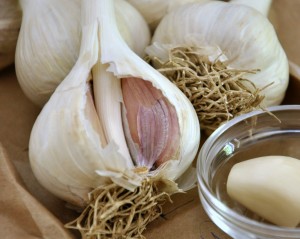
There is a long traditional use of garlic as a medicinal herb, particularly to fight colds, flues, and infections, and modern science has confirmed some of these traditional uses. Having been shown to contain high levels of vitamin C, several B vitamins, a variety of flavonoids, saponins, proteins and enzymes, and the compounds alliin and allicin.
As a result of its many compounds, garlic can help to promote cardiovascular health and lower cholesterol levels, while during WWI (World War I) and WWII (World War II), garlic was used as an antiseptic to treat infections and prevent gangrene on wounded soldiers. Some studies have also shown garlic, or allicin extracted therefrom, to be effective in the treatment and regulation of hypertension. In any case, garlic is great for keeping bugs and pests away from the rest of your plants.
Rosemary is popularly used as a seasoning and culinary herb, but it has also traditionally been associated with improving the memory. From a scientific view, rosemary has been shown to contain several potent antioxidants and it is generally rich in calcium, vitamin B6, and iron.
There are many more plants, both wild and traditionally cultivated, that have a long history of traditional medicinal use; but remember that natural is not synonymous with harmless.
All medicines, herbal and pharmaceutical alike, should be taken in moderation and under the direction and guidance of a qualified doctor whenever possible.
Many herbal medicines can interact with or enhance the efficacy of prescription or other pharmaceutical drugs, so always exercise caution when taking new supplements or herbs of any kind. Talk to your doctor if you’re on any prescription medication, and be sure to keep your doctor informed if you start taking additional herbal medicines.
Finally, remember that many of these herbs, such as mint, garlic and rosemary, have rather potent antiseptic qualities. That means that if the SHTF, you can use some of the same medicinal herbs to make homemade cleaning products and soaps. After all, cleanliness is next to godliness.
This article has been written by Gaia Rady for Survivopedia.
Disclaimer: The opinions voiced by Gaia Rady, are her own and are not meant to take the place of seeking medical help from your healthcare provider. The practice of medicine without a license is illegal and punishable by law. Seek modern and standard medical care whenever and wherever it is available.


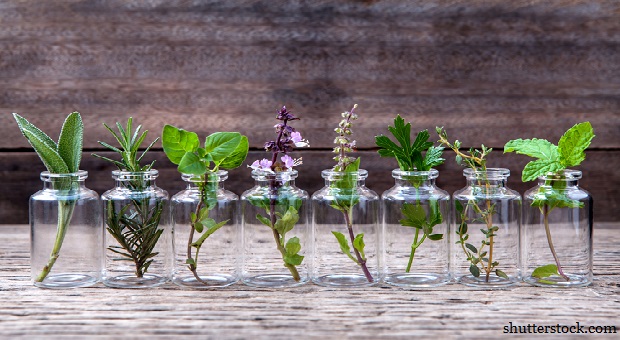

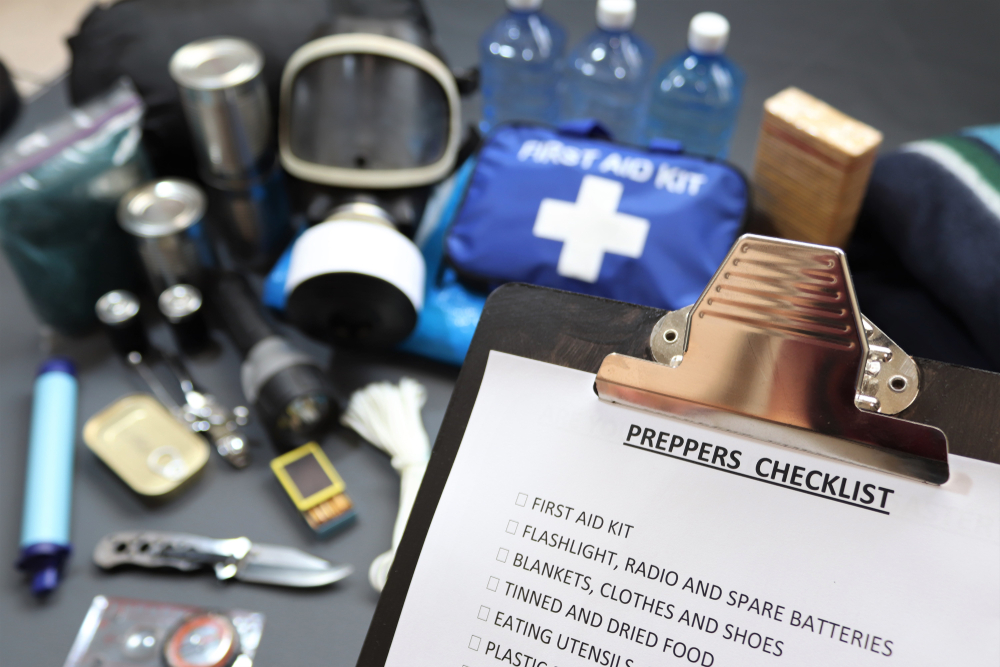

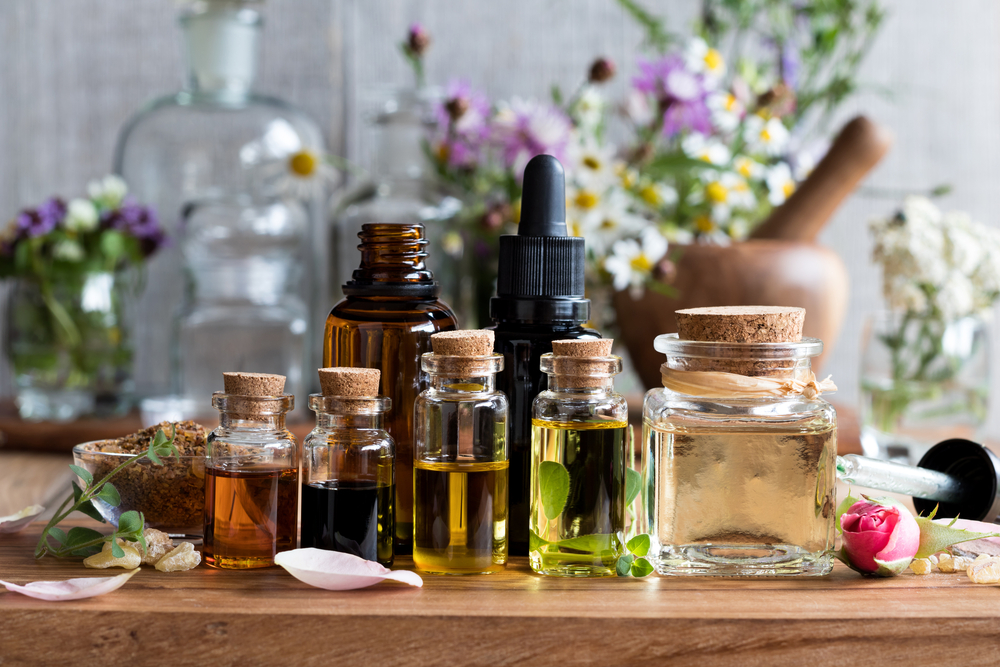
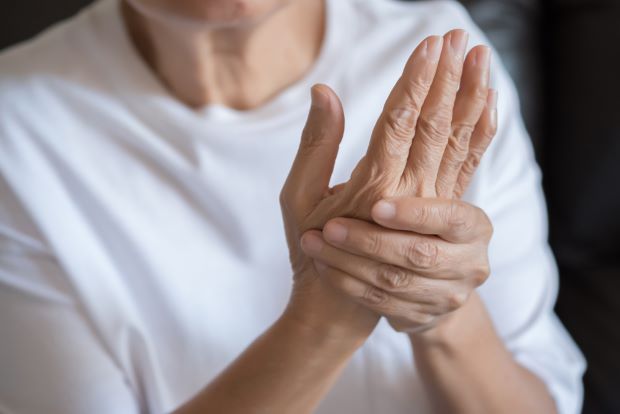

Pingback:7 Vital Herbs From The Herbalist’s Garden | SurvivoPedia | Forty Mile View | October 21, 2013
|
Ed Siceloff | October 21, 2013
|
I just wanted to add to your article here. I use peppermint all the time. A few drops of its essential oil added to your laundry will keep bugs out of your bed, including bed bugs. Spread on your clothes (it sweats off on your skin) and hair will keep mosquitoes and flies away. Same with fleas, ticks, chiggers, etc. It is an excellent bug repellant. Better than dramamine in stopping motion sickness and nausea. Perhaps very importantly, it can be used to literally stop an asthma attack (where you going to get those inhalers that load you up with corticosteroids when everything goes down). I used to use peppermint altoids, made with genuine peppermint oil, to give to my son to stop his asthma attacks. They are great for relaxing smooth muscle tissue, bronchial cough, etc. Tea accomplishes the same (peppermint tea).
Ginger duplicates peppermint in the belly, and can be used to soak with.
Feverfew is excellent for migraines. It will decrease the severity and the frequency.
Chamomile is completely useful for relaxing, calming down. But, it also a bug repellant, and, perhaps more important for many people, you can use a “tea”, an “extract” of it, to soak in. You have arthritis in your fingers, the heat and the chamomile will help to relieve it. It has some good anti-inflammatories in it.
Hawthorn berries and garlic together would really be helpful to replace the circulation medicines with. Hawthorn heals valve tissue. Pick it on old farmlands, where it is one of the first brush trees (along with crab apple) to grow up in formerly cultivated fields. Find a stand of it already established, and you can often find pheasant and grouse. But, pick the berries and dry them. 1 teaspoon with a cup of boiling water poured on top, steep for 5-7 minutes. You have your medicine. Make it your tea to drink. Over the course of several months, it will renew valve tissue, helps to renew the youthful expansion and contraction of other circulatory tissue. And it will improve the oxygen exchange from your lungs to your blood. That in itself has additional benefits for brain function. Also loaded with anti-oxidants, proanthrocyandins. Just to add.
Bill | October 21, 2013
|
Use oil of oregano for colds 2 drops under the tounge and the cold goes quickly.
Jacque Calkins | October 22, 2013
|
Does anyone know of something that can be used for anxiety…instead of SSRI’s
Andy Jarmin | October 23, 2013
|
st johns wort is useful for this- but Make Sure it actually is St Johns Wort!
As some herbal suppliers have been known to substitute other herbs instead…
Ioana Greceanu | October 25, 2013
|
Try linden tea, renowned for its calming effect, sweetened with natural honey and add a few drops of lemon juice.
jackie glasgow | October 22, 2013
|
I have found that lemonaid has a relaxing effect, hot or cold. St. Johns Wort has some calming effect, but you have to be careful and use about half what is recommended on the box or bottle. Lavender placed around your house is very calmning. Put lavender between your pillow and the pillowcase. this will give you avery good nights sleep.
Roseann | November 5, 2013
|
This is my first time pay a quick visit at here and i am actually impressed to read
all at single place.
Pingback:Passionate about plants? Start a Business by Growing Organic Herbs - Chit Chat BIZ | November 5, 2013
|
Pingback:Why Every Prepper Needs To Know About Oxygen Concentrators | Survivopedia | February 24, 2016
|
Pingback:Why Preppers Need To Know About Oxygen Concentrators | NewZSentinel | February 24, 2016
|
Pingback:Why Preppers Need To Know About Oxygen Concentrators | | disasterdefense.us | February 25, 2016
|
Andrew | June 10, 2016
|
Can’t download the pdf for this article, it gives me this error message:
TCPDF ERROR: [Image] Unable to get image: http://www.survivopedia.com/wp-content/uploads/2013/10/mint-in-pot-300×225.jpg
Pingback:How To Defeat Your Fear When SHTF | Survivopedia | August 23, 2018
|